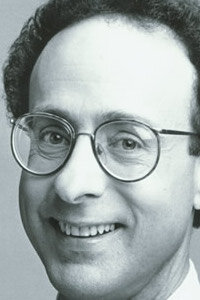What can clearly be referred to as a continuing epidemic, within only the past few weeks, a number of gay young men have taken their lives by all indications as a result of the unrelenting homophobic taunts, harassment, and attacks they had to endure by their peers: Seth Walsh, 13, hung himself from a tree outside his California home; Billy Lucas, 15, hung himself in Indiana; Asher Brown, 13, from Texas shot himself in the head; Tyler Clementi, 18, first-year student from Rutgers University took his life by jumping off the George Washington Bridge. And though we are not yet certain of the precipitating factors, now we hear of the tragic suicide of gay student, Raymond Chase, 19, from Johnson & Wales University in Rhode Island.
Throughout the past week, I have attempted to monitor the media to determine any themes in the way they have represented these tragic incidents. For many of the news outlets, it appears they are portraying these events as some sort of new trend they have deftly unearthed.
In reality, however, the media and our society generally suffers from a collective memory loss. This issue has arisen numerous times over the decades, but then appears in the media from time to time as if it were a unique and previously unrecorded development.
Back in 1989, for example, the United States Department of Health and Human Services (HHS) issued its “Report on the Secretary’s Task Force on Youth Suicide,” which found that “A majority of suicide attempts by homosexuals occur during their youth, and gay youth are 2 to 3 times more likely to attempt suicide than other young people. They may comprise up to 30 percent of (the estimated 5,000) completed youth suicides annually.” [U. S. Department of Health and Human Services, “Gay Male and Lesbian Youth Suicide,” by Paul Gibson, in Report of the Secretary’s Task Force on Youth Suicide, ed. Marcia R. Feinleib, Washington, DC, January 1989.]
The report recommended that “mental health and youth service agencies can provide acceptance and support for young homosexuals, train their personnel on gay issues, and provide appropriate gay adult role models; schools can protect gay youth from abuse from their peers and provide accurate information about homosexuality in health curricula; families should accept their child and work toward educating themselves about the development and nature of homosexuality”
The causes for these suicides have also been known and documented for decades as well. For example, Kevin Berrill, Director of the Anti-Violence Project of the National Gay and Lesbian Task Force at the time of the 1989 report’s release stated correctly pinpointed the societal impact: “The increased risk of suicide facing these youth is linked to growing up in a society that teaches them to hide and to hate themselves.”
Initially, however, the report was suppressed by the George Herbert Walker Bush administration under pressure from right-wing groups and by conservatives in Congress. After the findings, William Dannemeyer, who was at the time a conservative Republican member of the U.S. House of Representatives from California, called for then-president Bush to “dismiss from public service all persons still employed who concocted this homosexual pledge of allegiance and sealed the lid on these misjudgments for good.” HHS Secretary Louis Sullivan wrote in a letter to Dannemeyer that the study “undermined the institution of the family.” [Quoted in Chris Bull, “Suicidal Tendencies,” The Advocate, April 5, 1994, p. 37.]
The findings of the report, however, were leaked to the press and finally released.
Other studies confirmed these findings. Gary Remafedi, Assistant Professor of Pediatrics, University of Minnesota, and author of Death by Denial: Studies of Attempted and Completed Suicide in Gay and Lesbian and Bisexual Youth, found in a 1991 study of 150 gay and lesbian youths in Minneapolis, more than 30% said they had attempted suicide at least once as a teenager.
“The youths who are at the greatest risk for suicide are the ones who are least likely to reveal their sexual orientation to anyone. Suicide may be a way of making sure that no one ever knows. It’s homophobia that’s killing these kids.” [Gary Remafedi, quoted in Bull, Chris, “Suicidal Tendencies,” The Advocate, April 5, 1994, p. 38.]
Some media recently have labeled the high profile suicide of Tyler Clementi as a national “wake up call” to the problem of lesbian, gay, bisexual, and transgender suicide.
Don’t blame me if I’m cynical, but didn’t we hear the same warning back in 1998 after the brutal homophobic murder of Matthew Shepard. Hundreds, maybe thousands of LGBT people have suffered vicious attacks, many ending in murder since 1998. Why then do the media not continually cover these incidents? If they did, our nation would not need a “wake up call.” We as a society might remain awake and vigilant.
I suspect in a week or so, even as the suicides and homophobic assaults continue, the media will move onto its next so-called “trend.” In a few years, maybe ten or so, they will issue yet another “wake up call” and (re)discover homophobia and its impact on the lives of our youth all over again.
Instead, we as a society must not depend on the media to alert us to the realities. As a society, we must take responsibility for the consequences for our inaction. More importantly, we must take responsibility for eliminating the stigma and the stereotyping of anyone and any group along the complete spectrum of human diversity.

Dr. Warren J. Blumenfeld is author The What, The So What, and The Now What of Social Justice Education (Peter Lang Publishers), and Warren’s Words: Smart Commentary on Social Justice (Purple Press); editor of Homophobia: How We All Pay the Price (Beacon Press), co-author with Diane Raymond of Looking at Gay and Lesbian Life (Beacon Press), and co-editor of Readings for Diversity and Social Justice (Routledge) and Investigating Christian Privilege and Religious Oppression in the United States (Sense).
